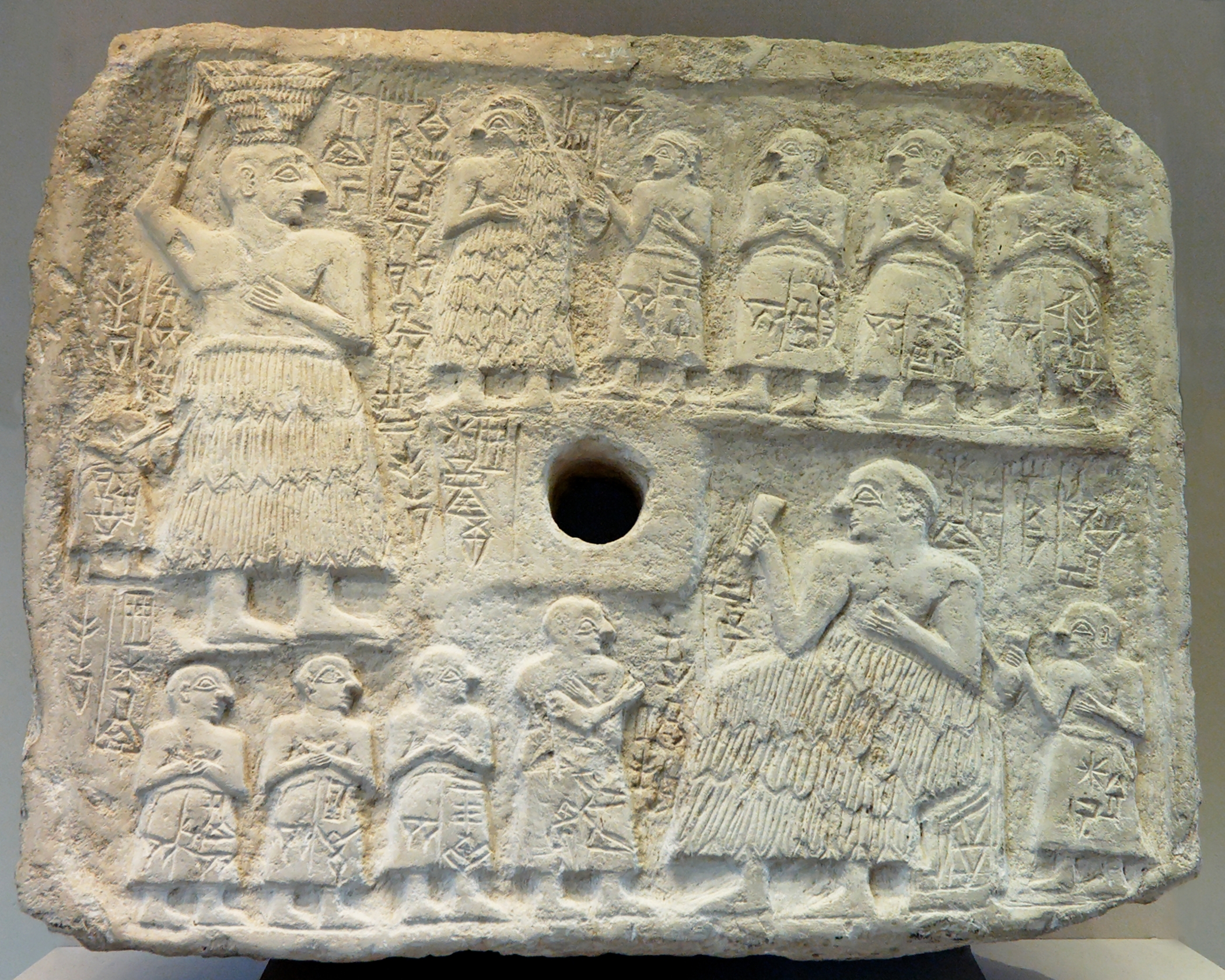The beer of the threshing floor at Lagaš.
At
The major beneficiaries of these first fruits are symbolically the king and the queen. A strong beer and some beer-bread (BAPPIR) are reserved for them. With the BAPPIR, the same beer called "beer of the threshing floor " is brewed. This is an abridged expression for « beer and bread for the threshing floor which has been emptied ».
Votive relief of Ur-Nanshe, king of Lagash in Early Dynastic (2550-2500 BC).
Upper register. The king carries the basket of builder and commemorates with some dignitairies the rebuilding of the temple of the god Ningirsu at Girsu.
Lower register. Banqueting and presiding scene. The king drinks beer in a goblet, surounded by his wife and children.
Some clay tablets omit the bread, which suggests joyous celebrations focused on drinking more than eating : here 42 liters, there 84 liters of a strong beer brought to the palace under the name "beer of the threshing floor ". The accounts show large volumes of beer specially prepared by one of the brewers working at the household of the queen, a beer brewed with hulled emmer wheat, BAPPIR and malt[1]. This festival is integrated to the cycle of barley. In the third millennium Mesopotamia, it cannot be completed without the new barley conversion into a beer consumed by the leaders of the city, with the palatial and religious staff.
A clay tablet records around 42 liters of strong beer drank « when the Princess has made the temple servants eat bread ». During the communal meal, the Princess officiates through the city deities. The beer occurs in the agrarian rites until the final celebrations. Another significant detail : a special beer is brewed in the palace for the occasion with the new malted barley provided by the threshing and malting floors which operate around the city. It is a matter of « beer from fresh barley (kaš-še-gibil ) » related to « brewers of fresh-barley (beer) » (lú-kaš-še-gibil-ka )[2]. The link between the fermented beverage and the conclusion of the cycle of barley could not be more strongly emphasized.
[1] Yvonne Rosengarten 1960, Le Concept Sumérien de consommation dans la vie économique et religieuse : 217-218.
[2] op. cit. 361.



